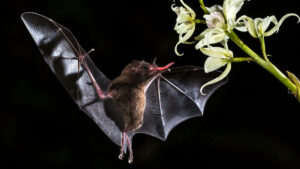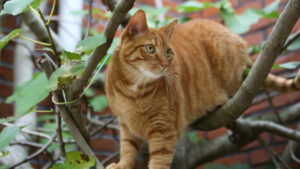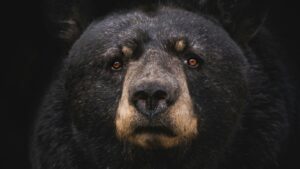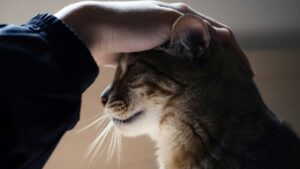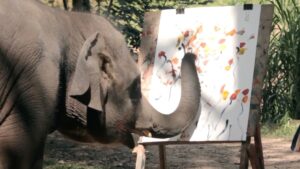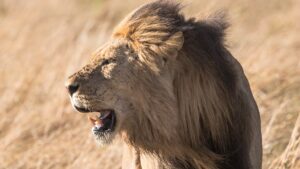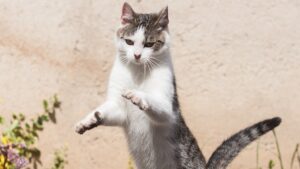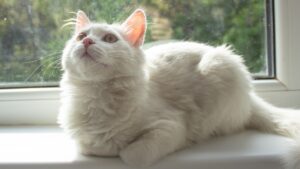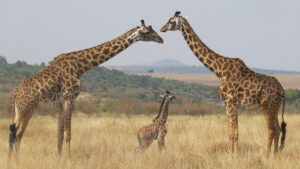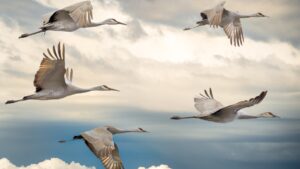
The Science of Lion Communication: Deciphering the Roar
In the heart of the African savanna, where the sun blazes and the grasslands stretch endlessly, an awe-inspiring sound takes center stage. It’s not the call of the cuckoo or the rustling of leaves — it’s the roar of lions. These amazing animals have a secret language of their own — and today, we’re going to decipher why loans roar. We’ll also explore the intricacies of their vocalizations and how they communicate within a pride.
Why do lions roar?
Before we discuss the complexities of lion roars, let’s start with the basics. Lions communicate using a range of vocalizations, and one of the most iconic is, of course, the mighty roar. Lions are the only big cats that can roar, thanks to a specialized structure in their throat, which allows them to produce these earth-shaking vocalizations. Per WWF, lions roar to demonstrate their power. They also do it to scare off intruders and defend their territory.
Also, a lion’s roar isn’t just about saying, “I’m here, deal with it.” It’s a multifaceted message. The intensity, pitch, and duration of the roar can convey information about the lion’s age, size, and even its genetic fitness. Researchers have noted that a lion’s roar can travel for up to five miles in the savanna, making it a powerful tool for both communication and intimidation.
A young, eager lion attempts a feeble roar. It’s like a teenager trying to sound tough when facing the principal. On the other hand, an older, dominant male’s roar resonates with power, like a seasoned rockstar taking center stage. The roar isn’t just a sound — it’s an announcement of status and prowess.
Types of lion vocalizations

Now, let’s take a closer look at the different types of lion vocalizations and the role they play in the dynamics within a pride. Pride is not just about showing off one’s magnificent mane. It’s a complex social structure where communication is key. Lions utilize various vocalizations to maintain order and harmony within the pride, per Worldwide Nature.
Contact calls
Contact calls are like text messages in the world of lions. Lionesses and cubs use these softer, gentler vocalizations to stay connected with each other. It’s the equivalent of sending a quick “I’m here” or “Where are you?” message among friends.
Growls
Just like in human families, disputes arise within the lion pride. Growls come into play when a disagreement ensues over who gets the last morsel of food. Also, a warning growl can prevent things from getting out of hand.
Moans and purrs
Moans and purrs aren’t just sounds of contentment, but rather strategic tools for lionesses to keep their cubs in check. Think of it as a mother’s soothing lullaby, a way of saying, “It’s bedtime, kiddos.”
Whoop calls
Whoop calls are the emergency sirens of the savanna. Lions use these loud, long-distance vocalizations to alert fellow pride members about an important discovery, such as prey that they can hunt.
Roaring as a team
When lions hunt, they employ a fascinating strategy called cooperative hunting. Team members communicate through roars and whoop calls to coordinate their efforts. Imagine a lioness saying, “Okay, guys, on the count of three, we pounce!”
Lioness leadership
It’s time to give credit where credit is due. Lionesses are often the unsung heroes of the pride. Their coordinated hunting efforts rely on a communication system that puts human teamwork to shame. Each lioness has her role, and they execute it with military precision. They are the “smooth-talking” masterminds of the pride.
The silent roar of conservation
While we’re enjoying exploring lion communication, it’s vital to remember the serious business of lion conservation. Lions, despite their vocal prowess, face numerous challenges in the wild. Habitat loss, poaching, and human-lion conflicts are just a few of the threats that have led to a decline in their populations.
Conservation efforts are crucial to ensure the future of lions. Various organizations and scientists are working tirelessly to protect lion populations and their habitats.
As we conclude our roaring journey through the science of lion communication, we’ve only scratched the surface of the captivating world of these majestic creatures of the savanna. From the mighty roar of dominance to the soothing purrs of motherhood, lions have a diverse vocabulary that underscores the intricacies of their social structure.
Let’s not forget the serious challenges these magnificent beasts face. In the end, it’s a reminder that the fate of these incredible animals is in our hands, and by understanding the science of lion communication, we can contribute to their survival and the preservation of their unique language in the wild. With this in mind, let’s ensure that the roaring science of lions continues to echo through the African savanna for generations to come.
RELATED: Why Do Cats Purr? — Understanding the Feline Symphony
Header image: Lion roaring / Jean Wimmerlin via Unsplash
I’m Mark Putzer, and my passion for animals and all things nature is a life-long love affair. Growing up in Wisconsin, I had many cherished memories of hiking, skiing, and enjoying the abundant wildlife in the Badger State.
My passion for animals led me to marine biology research for my studies at the University of Wisconsin. I researched the behavior and communication of humpback whales around Hawaii and Orca Whales around the San Juan Islands of Washington State. The experience of being close to these massive and magnificent creatures is amazing. Later, I taught outdoor education to children in California — passing along my knowledge of animals and nature to the curious minds of the next generation. I also love pets. This includes a Labrador Retriever dog named “Molly” when I was a kid — and now, an adventurous tabby cat named “Rosy.”
I’m here to share the wonders of the animal kingdom with you. Whether it’s a cherished pet at home or an animal out in the wild, there are many unique stories and interesting information to share on Weird Animal News! Enjoy!

